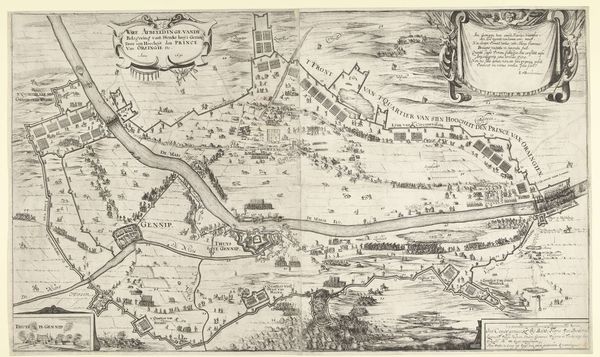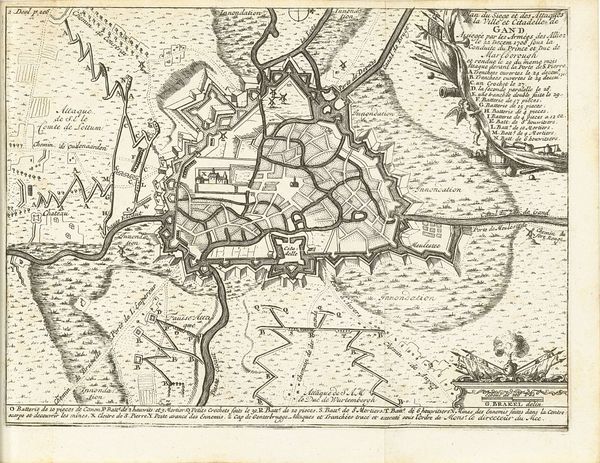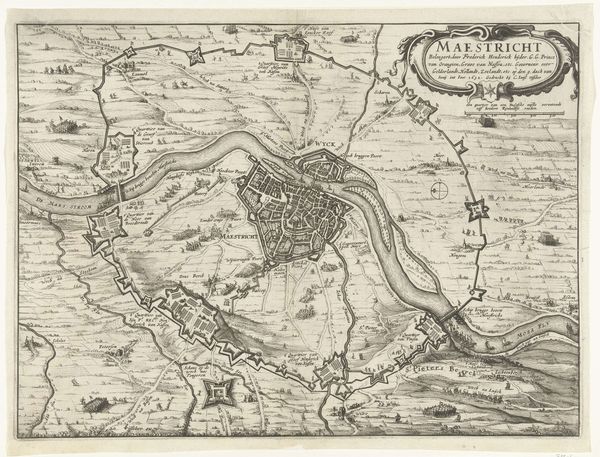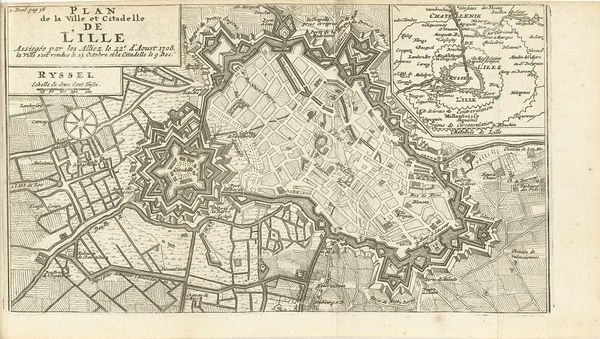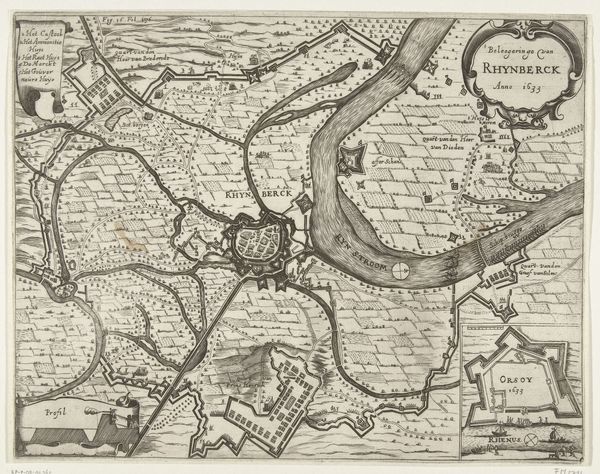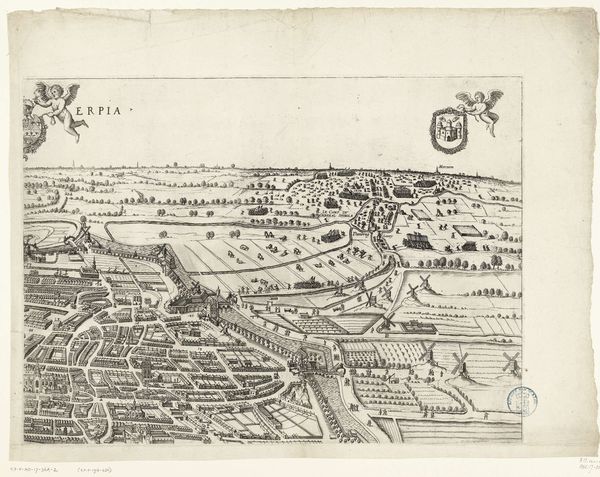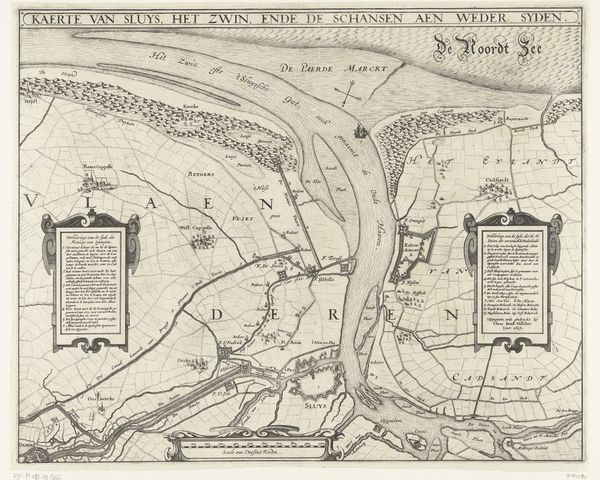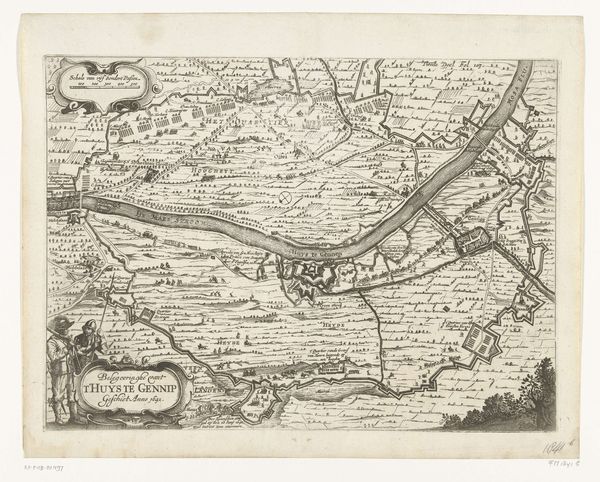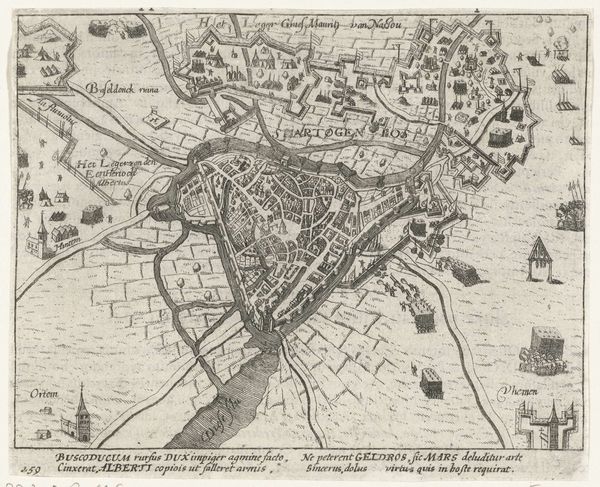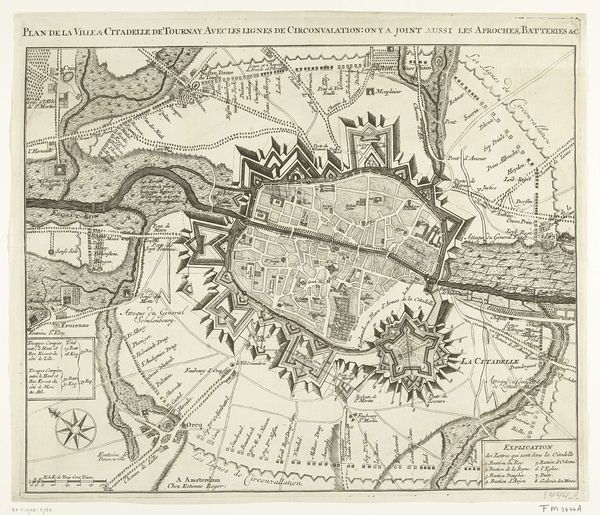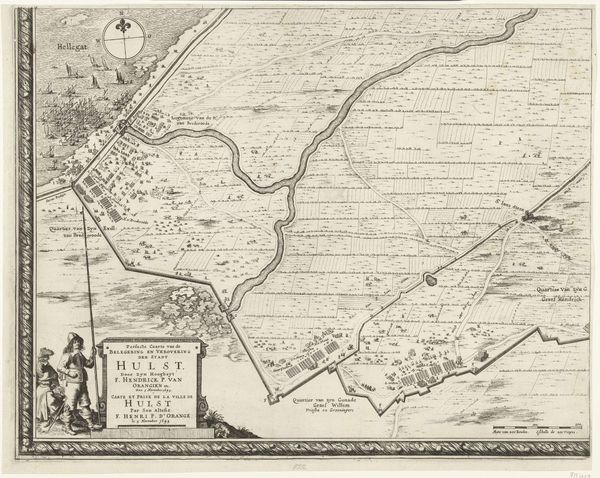
print, engraving
# print
#
old engraving style
#
cityscape
#
history-painting
#
engraving
Dimensions: height 147 mm, width 200 mm
Copyright: Rijks Museum: Open Domain
Editor: Here we have "The Siege of Turin, 1706," an engraving by Matthijs Pool created between 1714 and 1716. It's incredibly detailed, a sort of bird's-eye view map of the city and surrounding landscape. The sheer level of detail is astounding. How do we even begin to unpack something like this? Curator: It's more than just a map; it's a representation of power and control during a turbulent period. Consider the act of mapping itself. Who creates these maps, and whose perspectives are prioritized? This image showcases the siege of Turin. Who benefits from documenting it this way? Editor: That's a fascinating point. I hadn't thought about the inherent bias in map-making. So, beyond the topographical accuracy, what narratives might Pool be reinforcing or challenging? Curator: Look at the positioning of the besieging forces versus the city itself. It highlights military strategy, but it can also tell a story about resistance, resilience, or even the futility of war. This wasn't just a battle; it was a clash of cultures, of political ideologies. The representation reinforces particular viewpoints related to class and authority. Editor: So, it's not just about what's depicted, but also *how* it's depicted that reveals the power dynamics at play. Do you think Pool's own social standing influenced his approach? Curator: Undoubtedly. As an artist working during this period, his patronage and affiliations would have shaped his perspective. To analyze this print fully, we would need to examine the broader socio-political context: who commissioned the work, where it was displayed, and what impact it had on public perception of the siege. Editor: That really shifts my understanding. I went in thinking about lines and perspective and leave thinking about the politics embedded within a seemingly objective representation. Curator: Precisely! Art is never created in a vacuum. Understanding the context allows us to deconstruct the dominant narratives and see the hidden complexities within the work.
Comments
No comments
Be the first to comment and join the conversation on the ultimate creative platform.

